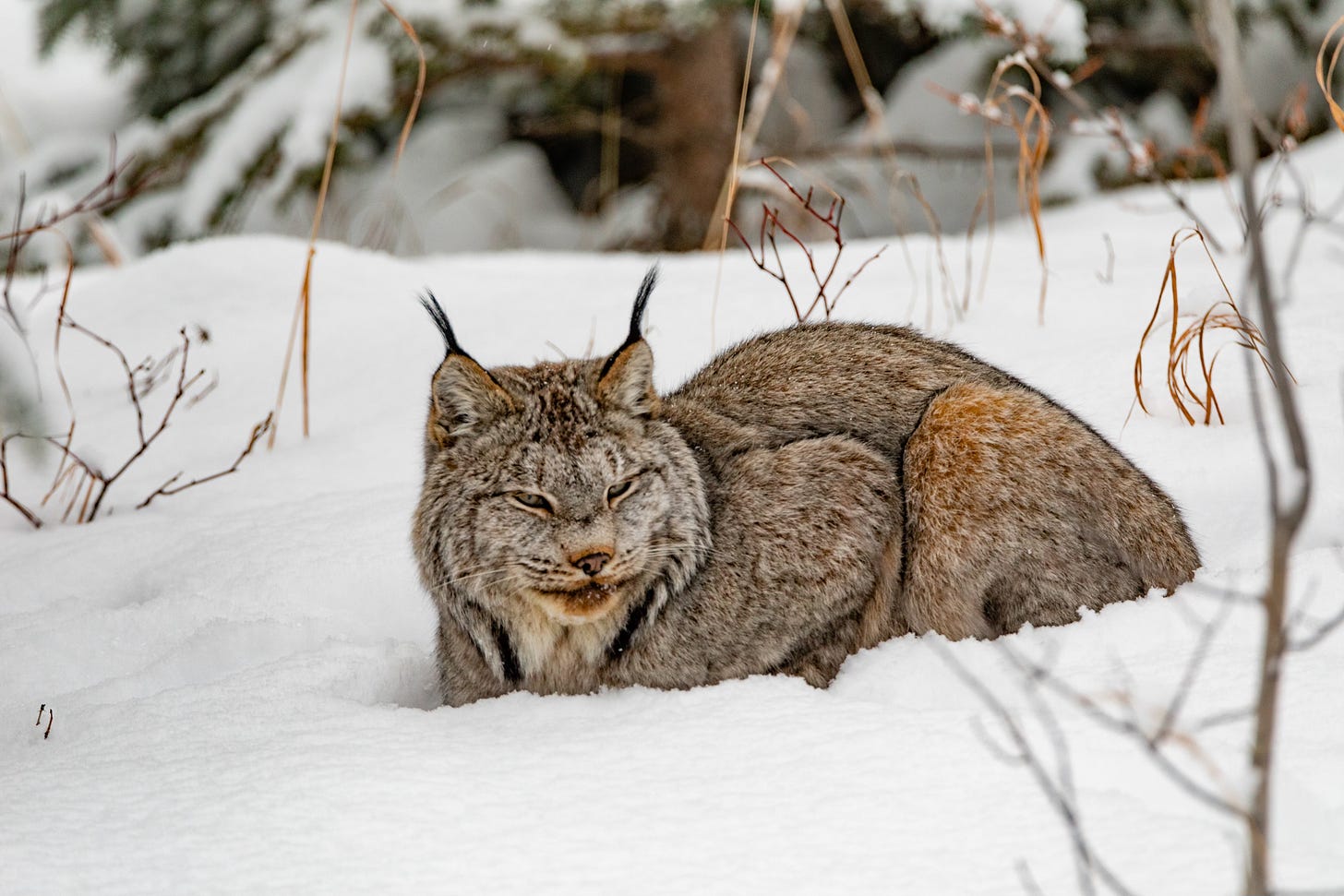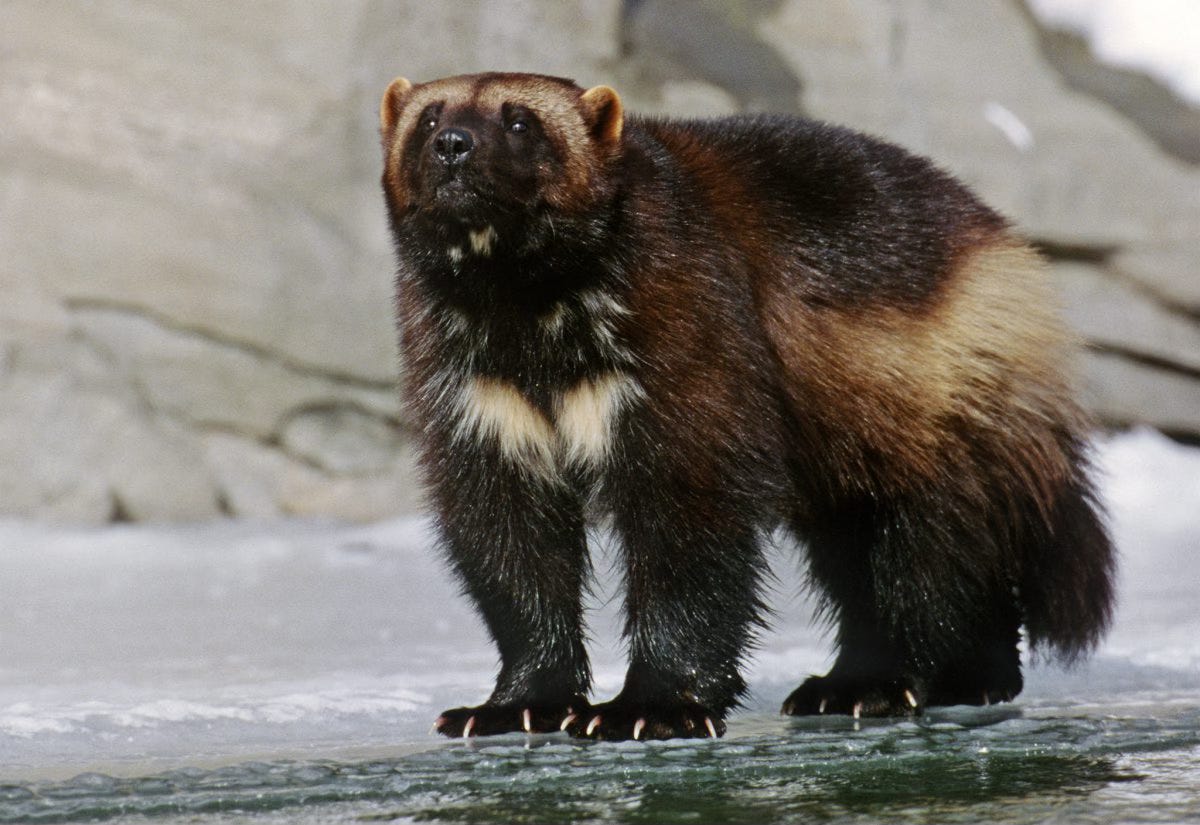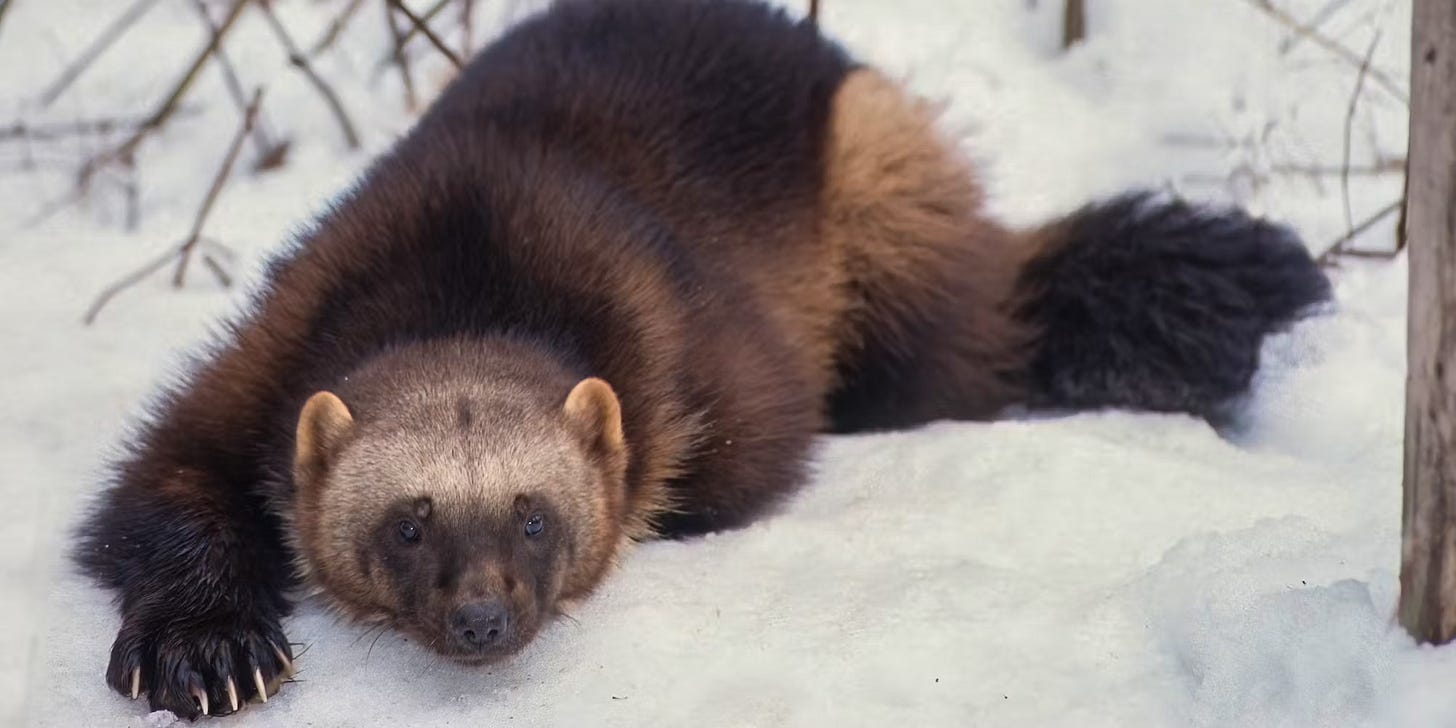What happens to wolverines when the roads arrive?
Sept. 19 is the last chance to save 45 million acres of forests and wildlife
By Dan Fletcher
When the deadline for arguably the most important conservation comment period in decades hits at 11:59 p.m. Eastern Time on September 19, America will have spoken on whether 45 million acres of its wildest forests deserve to survive intact.
Over 40,000 submissions were received in just the first week after the Trump administration opened public comments on its plan to rescind the 2001 Roadless Area Conservation Rule. That's a remarkable response, but it pales next to what happened when the rule was first proposed: over 1.6 million comments — the most that any rule had ever received — with over 90% of the letters in favor of it.
This time around, the administration gave the public just three weeks to weigh in on a key step of its attempt to scrap the Roadless Rule — compared to a full month for the original rulemaking. It's a truncated timeline that seems designed to limit input on what would be the largest rollback of conservation protections in U.S. history.
The stakes for wildlife couldn't be higher. These stretches of untouched forests are some of the last refuges for some of America's most vulnerable animals. Wolverines, Canada lynx, grizzly bears, cougars, wolves, all depend on these large, undisturbed habitats to survive. For a grizzly bear emerging from hibernation in Montana's high country, or a lynx hunting snowshoe hares through pristine forests, roadless areas represent the difference between persistence and extinction.

Take grizzly bears. Almost 40% of Cabinet-Yaak National Forest grizzly bears' habitat is in roadless areas, and the loss of conservation protections would be devastating for a population that already faces connectivity challenges and has not yet reached recovery goals. This population of about 67 bears in northwest Montana and northeast Idaho is already struggling to maintain genetic diversity. Remove their roadless refuges, and they face an even bleaker future.
The Canada lynx faces similar pressures. Without roads fragmenting habitat, deer and elk have more room to roam and trout streams run cleaner, but it's the lynx that really need those vast, unbroken territories. These cats require enormous home ranges and are so sensitive to disturbance that a single new road can render hundreds of acres unsuitable.
Then there are the wolverines — arguably North America's most elusive large carnivore. A recent study found that wolverines were less likely to occur at sites with logging or burned areas, making the protection of roadless areas critical for their survival. With fewer than 300 wolverines remaining in the lower 48 states, these animals simply can't afford to lose any more secure habitat.

Roadless areas in forests shelter more than 220 species that are threatened, endangered or proposed for Endangered Species Act protection. For many of these animals, roadless areas aren't just preferable habitat — they're essential strongholds without which local populations simply cannot persist.
The administration's rationale for rescission centers on wildfire prevention and economic development. "For nearly 25 years, the Roadless Rule has frustrated land managers and served as a barrier to action – prohibiting road construction, which has limited wildfire suppression and active forest management," says Forest Service Chief Tom Schultz.
But the science tells a different story. Research consistently shows that roads increase rather than decrease fire risk, with most wildfires starting near human infrastructure. And for the wildlife that call these places home, the cure — fragmenting intact habitat with roads and logging operations — is worse than the disease.
If you care about the future of American wildlife, tonight is your last chance to make your voice heard. Comments must be received in writing by September 19, 2025 through the Federal Register at regulations.gov under docket number FS-2025-0001.
Don't let the grizzlies, lynx, wolverines, and hundreds of other species that depend on roadless areas become footnotes in the history of American conservation. The clock is ticking, and after tonight, the next opportunity to comment won't come until March 2026 when the draft environmental impact statement is released.
These 45 million acres are lifelines for wildlife that cannot survive in an increasingly fragmented landscape. And right now, every voice speaking up for them helps.




This is such a precarious time for the environment, it’s baffling to me that anyone would want to remove one of the few remaining protections! I really hope this sabotage can be stopped in its tracks.
Reposting on Facebook!